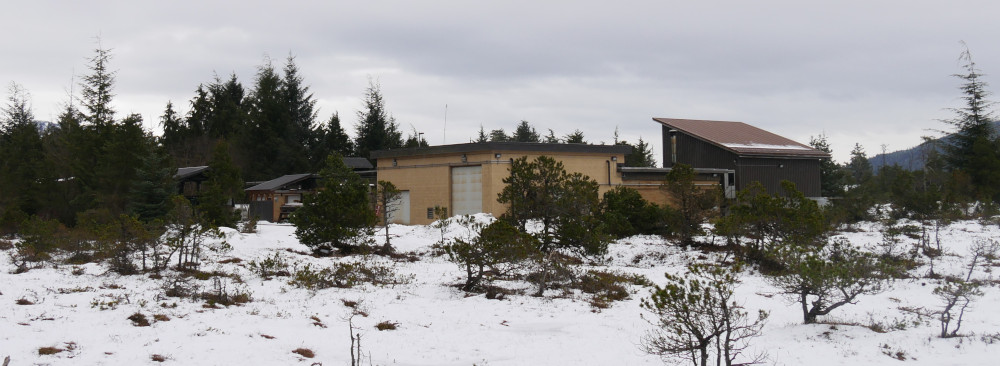
Some communities in Alaska that release treated waste water into the ocean could be facing big costs for upgrading sewage treatment. State environmental regulators have been meeting with local government representatives about the need to reduce bacteria levels in shoreline mixing zones.
Nine coastal communities large and small from Anchorage to Ketchikan are permitted by the U.S. Environmental Protection Agency to disburse treated waste water from municipal sewer systems into the ocean. Those are Anchorage, Haines, Ketchikan, Petersburg, Sitka, Skagway, Wrangell, Pelican, and Whittier.
The federal Clean Water Act requires municipal waste water discharges meet both primary and secondary treatment levels. The first or primary stage uses gravity to separate solids from liquids; the second uses filters, bacteria or some other process to break down organic waste. For decades these communities have had EPA waivers allowing less than full secondary treatment for waste water.
But that could be changing.
Gene McCabe is the Alaska Department of Environmental Conservation’s program manager for the waste water discharge authorization program. He said guidance has evolved over the last two decades to insure that mixing zones are issued consistently and permitted to be as small as a practically possible.
“What’s changed is the fact that we need to establish for any proposed mixing zone we would need for the bacteria, which obviously we do, that we go through this process of establishing has the permitted facility done everything that’s practicable prior to requesting the use of a mixing zone to meet the water quality standards,” McCabe said Thursday.
Petersburg’s primary processing includes running waste through screens and clarification tanks to remove solids before its is pumped out into a mixing zone in Frederick Sound, along Sandy Beach Road from the mouth of the Wrangell Narrows to Sandy Beach Park. The levels of bacteria at the outfall do not meet state water quality standards for collecting shellfish or swimming. But a state regulated mixing zone dilutes the pollution over a larger area, lowering bacteria levels.
An EPA study from last August modeled dilution and distances at these mixing zones in Haines, Ketchikan, Petersburg, Sitka, Skagway and Wrangell. It concluded that much larger areas would needed to achieve state water quality standards for the maximum permitted output at these sites.
While it’s the EPA that issues the discharge permit, the Clean Water Act requires states to certify that there’s reasonable assurance that the pollution will meet water quality standards. McCabe said of the nine plants with EPA waivers, the ones in Southeast are first to go through this process.
“We’ve been meeting with them regularly along with the EPA and explaining the requirement that we’re seeing that we need have each of these facilities demonstrate what is practicable for reducing the amount of bacteria that they’re discharging to reduce the size or even the need for a mixing zone at all for bacteria,” McCabe said.
McCabe saidthe conversation is not about full secondary treatment, unless the EPA decides not to reissue the waivers. Instead he thinks the plants might be required to disinfect the waste, using chlorination and dechlorination, or ultraviolet light.
The DEC’s water division director Randy Bates wrote to mayors of the communities this month that the reauthorization of the waivers is solely in the EPA’s court. Bates wrote that the DEC recognizes the additional costs that more treatment could mean and he pointed to state loan programs or the federal infrastructure bill as potential sources of funding.
Petersburg’s utility director Karl Hagerman told the borough assembly this month that the state is pushing for increased treatment.
“It’s obvious from the conversation that went on in the meeting that DEC is completely in favor of moving all primary treatment plants in Alaska, the nine plants that are left that still have these waivers to secondary treatment,” Hagerman said. “And while they want to offer that up as a freebie, counting on some federal monies to fall out of the sky and fund all that, they can’t guarantee it.”
Hagerman told the assembly he doesn’t know the cost of additional treatment, but gave a very rough estimate of around two million dollars. If the EPA doesn’t reissue waivers and requires full secondary processing, the costs could be much more. Hagerman said, depending on the upgrades required, it could also increase annual budgets.
“It will definitely be more than we pay now and it may extend to staffing because a lot of secondary treatment plants use a biological system to provide that level of treatment and that biological system needs to be monitored constantly and so a lot of secondary plants have 24 hour coverage,” he said. “And right now we don’t. We have seven day coverage but only eight hours a day.”
Petersburg’s assembly voted unanimously to send a letter to Governor Dunleavy seeking grant money to cover costs of treatment plant upgrades if they’re required.
In an email Hagerman writes that borough tests its discharge water twice a year and the utility operates well under permitted limits for fecal coliform.
According to reports in the Petersburg Pilot, the city of Petersburg constructed its waste water plant with secondary treatment in 1977, but that processing broke down soon after, leading to a lawsuit between the city and the companies that designed and built it. The municipality continued with only primary treatment after receiving a waiver from the EPA.









